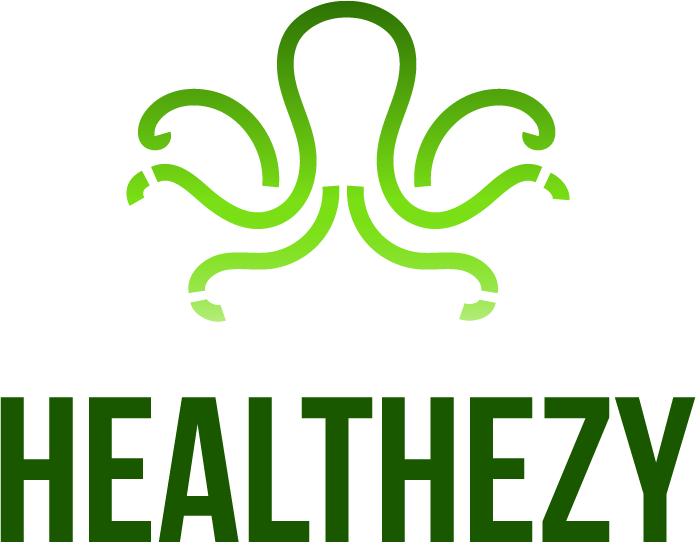What are product labels?
Product labels are informative labels that provide important information about a product, such as its ingredients, nutritional value, and potential health risks. They are designed to help consumers make informed decisions about the products they purchase and consume.
By reading product labels, individuals can better understand what they are putting into their bodies and make choices that align with their health goals. Product labels play a critical role in promoting transparency and empowering consumers to take control of their health.
Whether it’s checking for allergens, monitoring calorie intake, or avoiding certain ingredients, reading product labels is essential for maintaining a healthy lifestyle.
Importance of reading product labels
Reading product labels is of utmost importance for maintaining good health. By carefully examining the information provided on product labels, consumers can make informed decisions about the products they choose to consume.
Product labels provide valuable information about the ingredients, nutritional content, and potential allergens present in a product. This knowledge allows individuals to avoid potential health risks and make choices that align with their dietary needs and preferences.
Additionally, reading product labels can help consumers identify any harmful additives, preservatives, or artificial ingredients that may be present in a product. By being aware of what is in the products they consume, individuals can take control of their health and make conscious choices that support their overall well-being.
Common information found on product labels
Product labels contain important information that is critical for your health. They provide common information about the product, including the ingredients, nutritional values, and allergen warnings.
By reading and understanding these labels, you can make informed decisions about the products you consume and ensure that they meet your dietary needs and preferences.
Additionally, product labels often include instructions for proper use and storage, as well as important safety information. Therefore, taking the time to read product labels is essential for maintaining your health and well-being.
Understanding Nutritional Information
Serving size and servings per container
The serving size and servings per container are important factors to consider when reading product labels. The serving size indicates the recommended amount of the product that should be consumed in one serving, while the servings per container tells you how many servings are in the entire package.
Paying attention to these values can help you make informed decisions about portion sizes and understand the nutritional content of the product. It is critical to read and understand this information to ensure you are consuming the appropriate amount of food for your health.
Calories and macronutrients
When it comes to managing our health, understanding the nutritional content of the food we consume is crucial. One important aspect to consider is the number of calories and the macronutrients present in a product.
Calories provide us with energy, and macronutrients such as carbohydrates, proteins, and fats are essential for our body’s functioning. By reading product labels and being aware of the calories and macronutrients in the food we eat, we can make informed choices that align with our health goals and ensure we are getting the necessary nutrients for a balanced diet.
Vitamins and minerals
Vitamins and minerals play a crucial role in maintaining good health. These essential nutrients are necessary for the proper functioning of our body and help support various bodily functions.
Vitamins are organic compounds that our body needs in small amounts to function properly, while minerals are inorganic substances that are required in larger quantities. Both vitamins and minerals are found in a variety of foods, including fruits, vegetables, whole grains, and lean proteins.
It is important to ensure that we consume a balanced diet to meet our daily requirements of vitamins and minerals for optimal health.
Identifying Allergens and Ingredients
Common allergens to watch out for
Food allergies can cause serious health issues, so it’s important to be aware of common allergens when reading product labels. Some of the most common allergens to watch out for include peanuts, tree nuts, milk, eggs, wheat, soy, fish, and shellfish.
These allergens can trigger allergic reactions in sensitive individuals, ranging from mild symptoms like hives and itching to more severe reactions like difficulty breathing or anaphylaxis. By carefully reading product labels and identifying potential allergens, you can make informed choices to protect your health.
Hidden ingredients and additives
Hidden ingredients and additives can pose serious risks to your health. Many products on the market today contain hidden ingredients that are not listed on the label. These ingredients can include allergens, artificial sweeteners, and preservatives, among others.
Consuming these hidden ingredients can lead to allergic reactions, digestive issues, and other health problems. It is important to read product labels carefully to ensure you are aware of any potential hidden ingredients or additives that may be present.
By doing so, you can make informed choices about the products you consume and protect your health.
Reading ingredient lists
Reading ingredient lists is an essential practice when it comes to making informed decisions about the products we consume. By carefully examining the ingredients listed on product labels, we can gain valuable insights into the composition of the product and its potential impact on our health.
Ingredient lists provide us with information about the presence of allergens, additives, preservatives, and other substances that may have adverse effects on certain individuals. Moreover, reading ingredient lists enables us to identify any potentially harmful or questionable ingredients that we may want to avoid.
Therefore, taking the time to read and understand product labels is critical for maintaining our health and well-being.
Decoding Health Claims and Certifications
Different types of health claims
Different types of health claims can be found on product labels. These claims provide information about the potential health benefits of a product.
Some common types of health claims include claims about the nutrient content of a product, claims about the relationship between a nutrient and a disease or health condition, and claims about the general well-being or overall health benefits of a product.
It is important to read and understand these claims to make informed decisions about the products we consume and their potential impact on our health.
Understanding organic and non-GMO certifications
Understanding organic and non-GMO certifications is essential for making informed decisions about the products we consume. Organic certification ensures that a product has been produced without the use of synthetic chemicals, pesticides, or genetically modified organisms (GMOs).
This certification guarantees that the product meets strict standards for environmental sustainability and animal welfare. On the other hand, non-GMO certification verifies that a product does not contain genetically modified ingredients.
By understanding these certifications, consumers can choose products that align with their values and prioritize their health and well-being.
Evaluating misleading claims
When it comes to evaluating misleading claims on product labels, it is crucial to be vigilant and informed. With the increasing number of products on the market, it is important to read and understand the information provided on labels to make informed decisions about our health.
Misleading claims can often be found in the form of exaggerated health benefits or false advertising. By carefully evaluating the claims made on product labels, we can protect ourselves from potentially harmful ingredients and make choices that are truly beneficial for our well-being.
Interpreting Expiration Dates and Storage Instructions
Understanding expiration dates
Expiration dates on product labels are important for understanding the freshness and safety of the product. These dates indicate the period during which the product is at its peak quality and flavor. It is crucial to pay attention to expiration dates to ensure that you are consuming products that are safe to use and consume.
Understanding expiration dates can help you make informed decisions about the products you purchase and consume, promoting good health and well-being.
Proper storage and handling
Proper storage and handling of products is essential to ensure their quality and safety. Whether it’s food, medication, or personal care items, following the recommended storage instructions can help maintain their effectiveness and prevent any potential risks.
It is important to store products in a cool, dry place, away from direct sunlight and extreme temperatures. Additionally, it is crucial to handle products with clean hands and avoid cross-contamination.
By practicing proper storage and handling techniques, you can ensure that the products you use are in their best condition and safe for consumption or use.
Determining shelf life
Determining the shelf life of a product is crucial for ensuring its safety and quality. It involves assessing various factors such as the ingredients used, the manufacturing process, and the packaging methods.
By understanding the shelf life of a product, consumers can make informed decisions about its consumption and storage. Additionally, manufacturers can use this information to establish appropriate expiration dates and storage recommendations.
Overall, determining the shelf life of a product is an essential step in ensuring the health and well-being of consumers.
Conclusion
The importance of informed consumer choices
In today’s market, consumers are bombarded with numerous products, each claiming to be the best and healthiest option. However, it is crucial for consumers to make informed choices about the products they purchase and consume.
This is where product labels play a critical role. Product labels provide valuable information about the ingredients, nutritional value, and potential allergens present in a product. By reading and understanding product labels, consumers can make informed decisions that align with their health goals and dietary needs.
Additionally, product labels also help consumers identify potential risks or harmful substances that may be present in a product, allowing them to avoid products that could negatively impact their health.
Therefore, it is essential for consumers to prioritize reading product labels as a means of ensuring their health and well-being.
Taking control of your health
Taking control of your health is crucial in today’s fast-paced and stressful world. One important aspect of maintaining a healthy lifestyle is being mindful of the products we consume. Product labels serve as a valuable resource for understanding the ingredients and nutritional information of the items we purchase.
By reading and understanding product labels, we empower ourselves to make informed choices that positively impact our health. Whether it’s checking for allergens, monitoring sugar content, or avoiding harmful additives, being aware of what we put into our bodies is critical for overall well-being.
So, the next time you go grocery shopping, remember to take control of your health by reading those product labels!
Empowering yourself through product label knowledge
Empowering yourself through product label knowledge is essential for maintaining good health. By understanding the information provided on product labels, you can make informed decisions about the products you consume.
Product labels provide valuable details about the ingredients, nutritional content, and potential allergens present in a product. This knowledge allows you to choose products that align with your dietary needs and preferences, ensuring that you are nourishing your body in the best possible way.
Additionally, being knowledgeable about product labels can help you avoid harmful substances or additives that may have adverse effects on your health.
By taking the time to read and comprehend product labels, you are taking an active role in safeguarding your well-being and promoting a healthier lifestyle.







